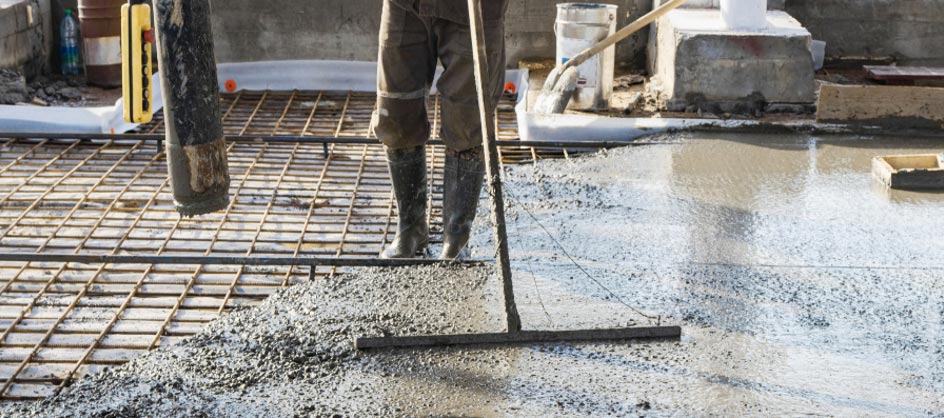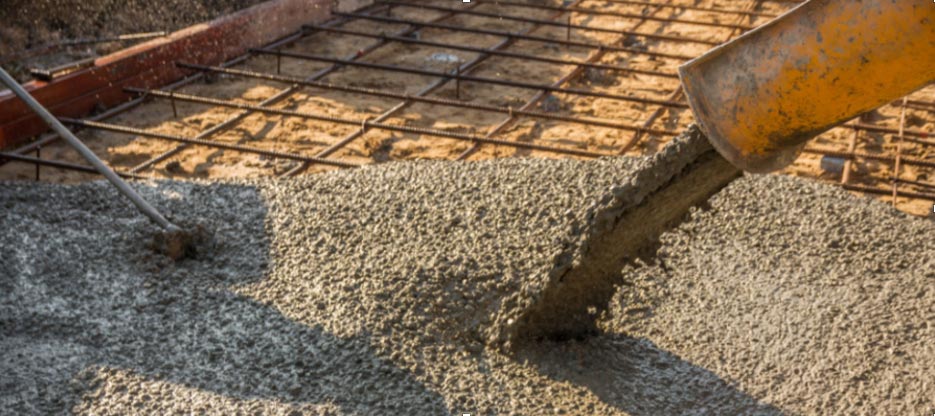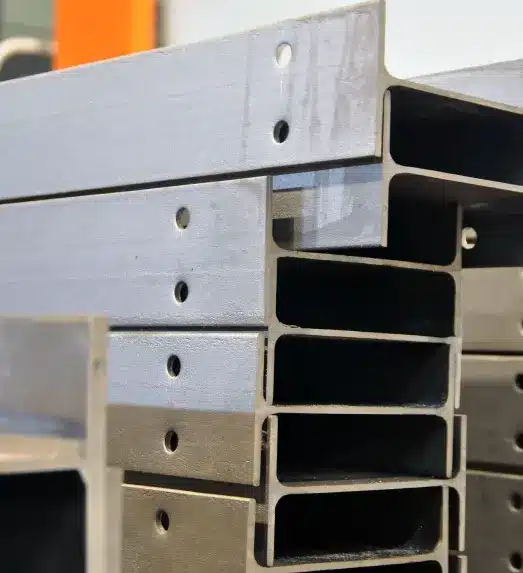Concrete is an affordable building material with multiple industry applications, including commercial, residential, industrial, infrastructure, energy, and utilities construction projects. However, concrete on its own isn’t as strong as most people think. Without structural steel reinforcement, it can crack and compromise the safety and integrity of your project.
What is Reinforced Concrete?
Even though concrete is a durable building material, it often needs reinforcing to withstand compressive and tensile stress.
Concrete is reinforced when steel products like rebar, wire mesh, PC strand, and steel fibers are used as reinforcement. These give concrete additional strength to stand up to the three primary types of stress:
- Compression
- Tension
- Shear
Compression tension occurs when concrete supports heavier loads. Tension stress is the opposite of compression — it’s when force starts pulling the slab apart. Shear stress is another reason to reinforce concrete. For example, severe weather like an earthquake or strong wind can force the concrete to shift.
Why Does Concrete Need Reinforcement?
Why concrete needs reinforcement ultimately comes down to power. When mixed and poured properly, concrete is a durable building material, but it often lacks the strength necessary to support modern building projects.
Unreinforced concrete isn’t strong enough to provide support without assistance. Therefore you want to reinforce concrete. Proper reinforcing prevents the brittle material from cracking or shifting under heavier weight or in severe weather conditions.
What Happens if Concrete Isn’t Reinforced?
The purpose of reinforcement is to add strength to concrete. When the material isn’t reinforced, the following issues can develop.
- The concrete can warp or stretch from tensile pressure. A sign to look for is stress lines appearing in the material.
- Tensile stress can also result in concave patches (dips) in the concrete. Depending on the concrete’s thickness, repairing the problem can be expensive.
- Stress fractures in concrete can also occur if the material isn’t reinforced. Severe fractures can cause the concrete to develop cracks resulting in breaks. Repairing the cracks is an extensive repair project. It typically means removing the crumbling sections and pouring a new layer of concrete.
- Concrete sliding to one side or the other is typically caused by severe weather or load stress. Something to look for are cracks around the stress lines. Finding the problem early often makes repairs easier and less expensive.
The takeaway: choosing not to reinforce concrete is often an expensive mistake.

Best Options for Reinforcing Concrete
When you are reinforcing concrete, you have a few options. Some reinforcement materials are better suited for specific concrete applications. Below are four trusted options offered byDWR Reinforcing and Steel Solutions.
Explore all our steel reinforcement product offerings.
Steel Rebar
Steel rebar is commonly used to reinforce concrete for a few reasons. The material is extremely ductile, meaning it can withstand plenty of pressure before breaking. Steel also expands and contracts at a similar rate, allowing it to bond more easily and securely with concrete.
Steel is also easy to work with and readily available.
Wire Mesh
Welded wire mesh is typically made from steel, but it has different uses. While rebar works great when pouring concrete at an angle, wire mesh is more commonly used in horizontal slabs but is also used in vertical walls, columns, bridges, girders, and decks.
Using wire mesh also saves a lot of time and labor vs rebar. The wire mesh is cut to size and laid in place before pouring the concrete. To keep the mesh from shifting, spacers are typically placed underneath the wire sheet.
PC Strand
PC strand (prestressed concrete strand) is also made from reinforcing steel. It consists of several wires wrapped around a central wire. The purpose of this type of reinforcement is to add tensile strength to concrete.
PC strand is used to reinforced varies types of concrete/applications. PC strands can also act as an anchor in soil and rock, helping to prevent the concrete from shifting or sinking.
Steel Fibers
Steel fibers are another common method used to reinforce concrete. There are several types of fibers to choose from, depending on the amount of tensile strength your project calls for.
The fibers are added to the concrete mix before it is poured. The number of steel fibers used depends on your budget and if you want to boost joint spacing or improve structural integrity.
Steel fibers can also help mitigate cracks, especially around joints.
Contact DWR for Top-Notch Concrete Reinforcement
In conclusion, concrete typically needs reinforcing — especially if it supports heavier loads. It’s also something to consider if you live in an area where severe weather is common. Deciding not to reinforce concrete can leave you with expensive repair bills.
Do you have questions about when to reinforce concrete or aren’t sure which method is right for your commercial construction project?
Contact our team of experts today to learn more about why concrete needs reinforcement.

